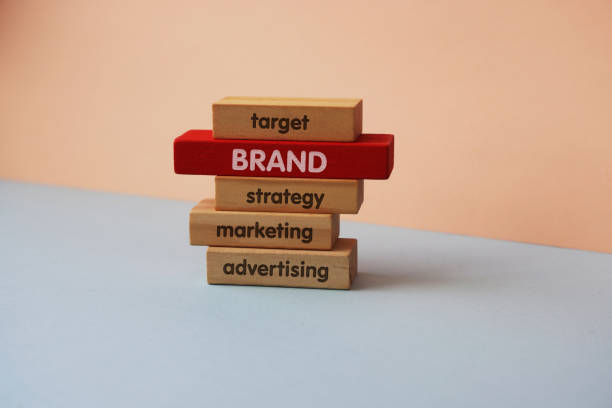Why do certain brands stand out effortlessly? What makes you recognize them instantly, even from just a logo, color, or packaging? Creative design is the secret sauce behind strong brand recognition. It’s not just about looking good; it’s about creating a cohesive, memorable identity that resonates with your audience. In today’s competitive market, your design choices can determine whether customers remember your brand—or forget it entirely.
This article dives into the impact of creative design on brand recognition, offering actionable insights and inspiring real-life examples to help your brand stand out.
The Importance of Brand Recognition
Brand recognition is the ability of customers to identify your brand through visual and sensory cues—without needing to see the name. It’s achieved through consistent and purposeful design choices that communicate your brand’s identity.
- Consistency Matters:
Customers trust brands that appear consistent across platforms, whether it’s your website, packaging, or social media. - Memorability Drives Loyalty:
Simplified, recognizable design elements ensure your audience remembers and returns to your brand. - Emotional Connections:
Design communicates your brand’s story and values, fostering emotional connections with your audience.
How Creative Design Shapes Brand Recognition
Creative design shapes brand recognition by transforming visual elements into powerful symbols that instantly connect with and captivate audiences.
1. The Power of Logo Design
A logo is the cornerstone of your brand’s identity. It should reflect your mission and values while being adaptable across platforms.
- Example: Starbucks
The Starbucks siren logo is a perfect blend of simplicity and storytelling. Over the years, it has evolved, but its essence remains instantly recognizable, embodying warmth and community. - Key Tip:
Ensure your logo works across various mediums, from tiny app icons to large-scale billboards.
2. Color Choices That Speak Volumes
Colors evoke emotions and associations. Choosing the right palette can define how customers perceive your brand.
- Example: IKEA
IKEA’s blue and yellow color scheme reflects trust, friendliness, and Scandinavian heritage. This consistency extends to their stores, ads, and products, solidifying brand recognition globally.
3. Typography That Tells a Story – Brand Recognition
Fonts aren’t just decorative—they’re communicative. Serif fonts suggest tradition, while sans-serif fonts feel modern and clean.
- Example: Netflix
Netflix uses a custom sans-serif typeface, “Netflix Sans,” which conveys modernity and focus. It complements their minimalist design approach, emphasizing their content over flashy visuals.
4. Imagery and Visual Elements
Your brand’s imagery should align with its tone and audience. High-quality, unique visuals leave a lasting impression.
- Example: Airbnb
Airbnb’s imagery highlights real-life moments and diverse hosts, emphasizing their community-driven mission.

Creative Design Across Platforms – Brand Recognition
Creative design across platforms ensures a consistent and compelling brand identity, enhancing recognition and engagement at every customer touchpoint.
1. Website Design
Your website is often your brand’s digital storefront. A user-friendly, visually appealing design encourages engagement and conversions.
- Example: Canva
Canva’s clean, intuitive interface embodies its mission of empowering creativity. Its bright colors and simple navigation cater to both professionals and casual users.
2. Packaging Design
Packaging is often a customer’s first interaction with your product. Memorable designs enhance brand recall and can influence purchasing decisions.
- Example: Lush
Lush’s eco-friendly, minimalist packaging emphasizes their commitment to sustainability. Each product feels personal, reinforcing their ethical brand values.
3. Social Media Graphics – Brand Recognition
Social platforms are where customers interact with your brand daily. Consistent, eye-catching visuals build recognition and trust.
- Example: Oreo
Oreo excels on social media by using playful, creative posts that incorporate their cookies in unique ways. Their graphics are consistent, reinforcing their fun-loving brand identity.
The Psychology Brand Recognition Creative Design
The psychology behind creative design explores how visual elements influence emotions and perceptions, shaping customer behavior and brand affinity.
1. The Power of Visual Memory
Humans process visuals faster than text, making creative design a vital tool for instant brand recognition.
2. Emotional Resonance
Design choices influence how customers feel about your brand. For example, warm colors like orange and red create excitement, while cool tones like blue and green suggest calmness.
How to Leverage Creative Design for Your Brand Recognition
Leveraging creative design for your brand involves strategically aligning visual elements with your values and audience to build a cohesive and memorable identity.
1. Define Your Brand Identity
Clarify your mission, values, and target audience. This foundation informs your design decisions.
2. Work With Professionals
Skilled designers can transform your vision into a cohesive visual identity, ensuring your brand stands out.
3. Test and Refine Your Designs
Use A/B testing to identify which designs resonate most with your audience. For example, test different logo or color variations to find the most impactful.

The Benefits of Prioritizing Creative Design – Brand Recognition
- Strong First Impressions:
A well-designed brand immediately communicates professionalism and credibility. - Increased Engagement:
Memorable designs capture attention and encourage interaction. - Long-Term Loyalty:
Consistent visuals build trust and reinforce your brand’s message over time.
Inspiring Real-Life Examples
Inspiring real-life examples showcase how successful brands use creative design to stand out, connect with their audience, and build lasting recognition.
Mailchimp
Mailchimp’s quirky illustrations and vibrant color schemes make their brand approachable and unique, appealing to small business owners and creative professionals.
Innocent Drinks
Known for their playful packaging and cheeky tone, Innocent Drinks’ design reflects their fun and eco-conscious brand values.
Patagonia
Patagonia’s minimalist design emphasizes sustainability and outdoor adventure. Their visuals consistently align with their environmental mission.
Future Trends in Creative Design
- Personalization:
Tailored designs that adapt to user preferences will become more prevalent. - Augmented Reality (AR):
Brands like Sephora and IKEA are already using AR to enhance customer experiences. - Sustainability in Design:
Eco-friendly materials and minimalism will continue to shape creative branding.
Final Thoughts: Brand Recognition
Are you ready to make your brand unforgettable?
Creative design isn’t just about aesthetics—it’s about communication, emotion, and connection. By investing in thoughtful design strategies, your brand can leave a lasting impression, drive customer loyalty, and thrive in a competitive marketplace.
Start your creative design journey today and watch your brand recognition soar. Because in a world full of noise, a well-designed brand speaks the loudest.








